I don't know if I fully understand which name of a measurement you want to change, but I'm assuming you mean the name of the measurement fragment.
When you have created a custom measurement in your Java project you have the possibility to annotate it with @Alias to provide your custom name
package c8y.tinkerforge.measurements;
import java.math.BigDecimal;
import org.svenson.AbstractDynamicProperties;
import org.svenson.JSONProperty;
import com.cumulocity.model.measurement.MeasurementValue;
import com.cumulocity.model.util.Alias;
@Alias("c8y_Acceleration")
public class AccelerationCombinedMeasurement extends AbstractDynamicProperties {
private static final long serialVersionUID = -2491579656609755745L;
public static final String DEFAULT_UNIT = "g";
private final String unit;
private MeasurementValue accelerationX;
private MeasurementValue accelerationY;
private MeasurementValue accelerationZ;
public AccelerationCombinedMeasurement(double accelerationX, double accelerationY, double accelerationZ,
final String unit) {
this.unit = unit;
this.accelerationX = new MeasurementValue(new BigDecimal(accelerationX), unit);
this.accelerationY = new MeasurementValue(new BigDecimal(accelerationY), unit);
this.accelerationZ = new MeasurementValue(new BigDecimal(accelerationZ), unit);
}
@JSONProperty("accelerationX")
public MeasurementValue getAccelerationX() {
return accelerationX;
}
public void setAccelerationX(double accelerationX) {
this.accelerationX = new MeasurementValue(new BigDecimal(accelerationX), unit);
}
@JSONProperty("accelerationY")
public MeasurementValue getAccelerationY() {
return accelerationY;
}
public void setAccelerationY(double accelerationY) {
this.accelerationY = new MeasurementValue(new BigDecimal(accelerationY), unit);
}
@JSONProperty("accelerationZ")
public MeasurementValue getAccelerationZ() {
return accelerationZ;
}
public void setAccelerationZ(double accelerationZ) {
this.accelerationZ = new MeasurementValue(new BigDecimal(accelerationZ), unit);
}
@Override
public int hashCode() {
final int prime = 31;
int result = 1;
result = prime * result + ((accelerationX == null) ? 0 : accelerationX.hashCode());
result = prime * result + ((accelerationY == null) ? 0 : accelerationY.hashCode());
result = prime * result + ((accelerationZ == null) ? 0 : accelerationZ.hashCode());
return result;
}
@Override
public boolean equals(Object obj) {
if (this == obj)
return true;
if (obj == null)
return false;
if (getClass() != obj.getClass())
return false;
AccelerationCombinedMeasurement other = (AccelerationCombinedMeasurement) obj;
if (accelerationX == null) {
if (other.accelerationX != null)
return false;
} else if (!accelerationX.equals(other.accelerationX))
return false;
if (accelerationY == null) {
if (other.accelerationY != null)
return false;
} else if (!accelerationY.equals(other.accelerationY))
return false;
if (accelerationZ == null) {
if (other.accelerationZ != null)
return false;
} else if (!accelerationZ.equals(other.accelerationZ))
return false;
return true;
}
@Override
public String toString() {
return "AccelerationCombinedMeasurement [accelerationX=" + accelerationX + ", accelerationY=" + accelerationY
+ ", accelerationZ=" + accelerationZ + "]";
}
}
In this case it should use the name c8y_Acceleration. When I create a datapoint graph for a sensor which uses this measurment class you get this:

You can see the name in the red outline.
